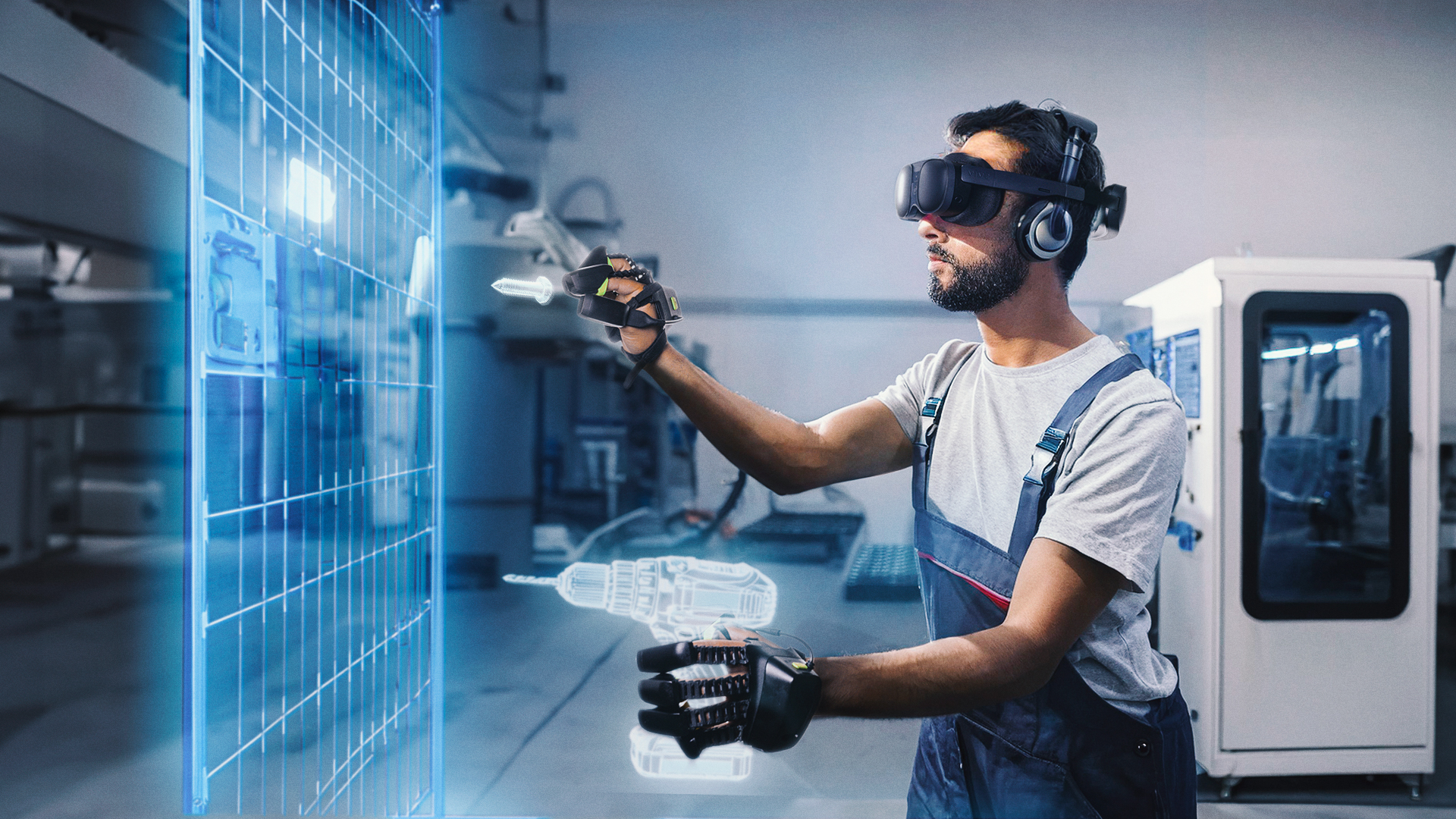Applied and WEART together to revolutionize immersive virtual simulation experience
The collaboration between Applied and WEART stems from a shared vision to create a virtual experience that goes beyond the boundaries of the merely visual, introducing the sense of touch in a digital context.

Applied and WEART: Innovation and Immersion in Virtual Simulation.
Applied, a leading provider of cutting-edge digital solutions, announces a new collaboration with WEART, a company specializing in the production of advanced haptics solutions. This strategic collaboration aims to revolutionize and redefine the way we simulate in a virtual environment, offering users an unprecedented experience through the seamless integration between Applied's Digital Twin Genesi and WEART's TouchDIVER haptic gloves.
A Collaboration aimed at the Fullest Immersion
The collaboration between Applied and WEART stems from a shared vision to create a virtual experience that goes beyond the boundaries of the merely visual, introducing the sense of touch into a digital context. The combination of Applied's Digital Twin Genesi with WEART's TouchDIVER haptic gloves allows users to fully immerse themselves in virtual environments, perceiving the physical characteristics of manipulated objects with unprecedented precision.
Genesi is designed for companies operating in technology-intensive industries, such as robotics, machinery manufacturing and industrial automation. This solution allows every aspect of manufacturing processes to be simulated and optimized, reducing risk, development time and cost. The integration of WEART haptics into Genesi not only enhances the simulation capability of the system, but also turns it into an essential tool for testing ergonomic aspects of the production process and performing advanced operational training in a realistic and detailed manner.
Haptics and Extended Reality: A New Standard
The combination of these technologies represents a significant step forward in creating extended reality (XR) experiences. Operators can now sense, through TouchDIVER gloves, the geometry and even the temperature of manipulated objects, significantly enhancing their sense of presence in the virtual environment. This haptic feedback enables more precise and safer control in complex operational contexts, such as manipulating objects in remote or hazardous environments, reducing the margin for error.
Haptics, through its ability to provide immediate sensory feedback, increases operational effectiveness, improves manipulation accuracy, and enhances operators' situational awareness.
A Common Vision for the Future
The collaboration between Applied and WEART reflects a shared vision for the future, where technology not only supports but also amplifies human capabilities. This collaboration represents a turning point in creating solutions that not only meet the current needs of industries, but also anticipate future trends, redefining the standards of how we interact with digital reality.
“With WEART, we are opening up new possibilities for virtual simulation and human-machine interaction,” said Luca Molducci, CEO of Applied. “This collaboration allows us to offer our customers more immersive and realistic experiences while improving efficiency and operational safety.”
Conclusion: The Touch of the Future
Applied and WEART are redefining the concept of digital experience. This collaboration marks the beginning of a new era in virtual simulation, where technology is not only seen, but felt. Together, the two companies are building a future in which the boundary between the physical and digital worlds becomes increasingly thin, paving the way for more natural, intuitive, and immersive human-computer interaction.
WEART: The Future of Digital Touch.
WEART, based in Milan, Italy, is one of the world's leading companies in the design and manufacture of haptic solutions that replicate human touch in digital and XR (Extended Reality) experiences. Their TouchDIVER haptic gloves represent the pinnacle of haptic technology, allowing users to perceive the geometry, material and temperature of virtual objects with stunning realism. These hardware and software solutions greatly enhance human-machine interaction, opening up new possibilities for applications in fields ranging from manufacturing to immersive entertainment.



